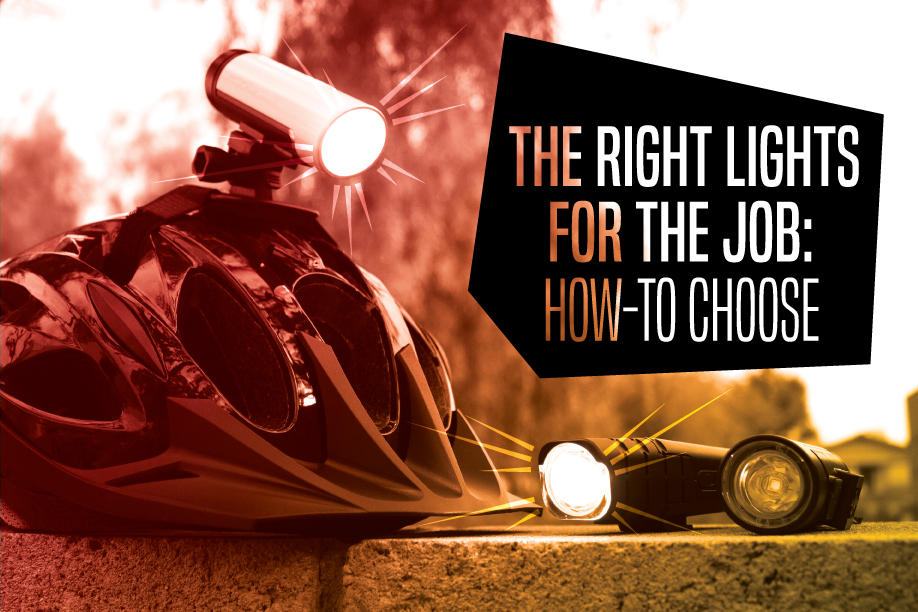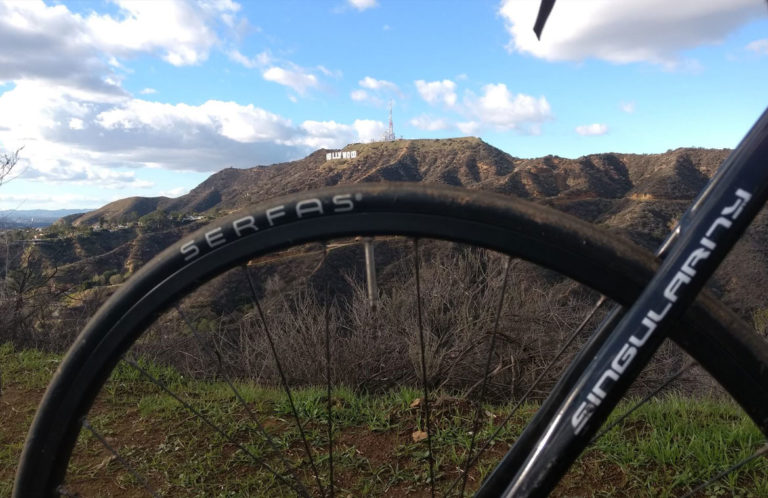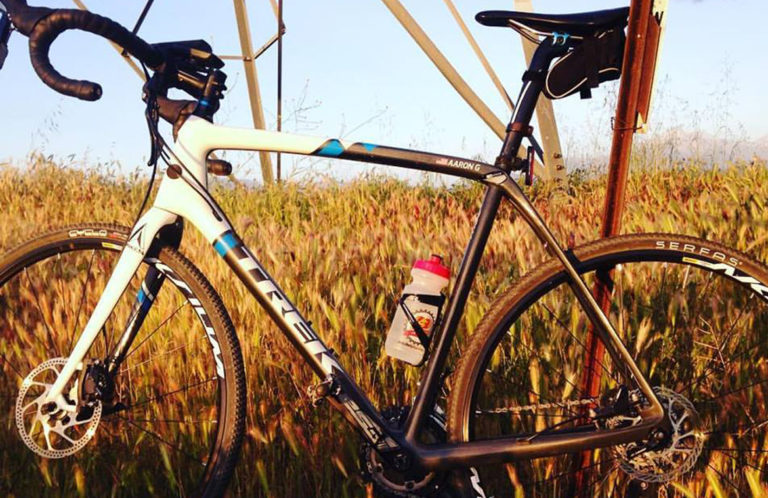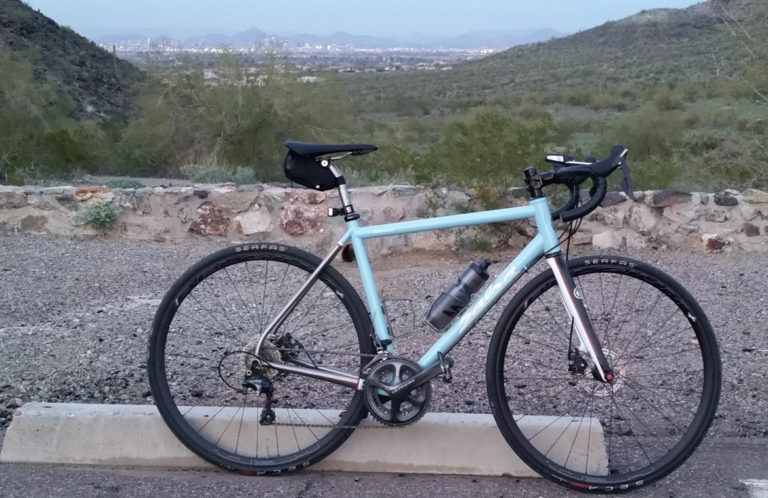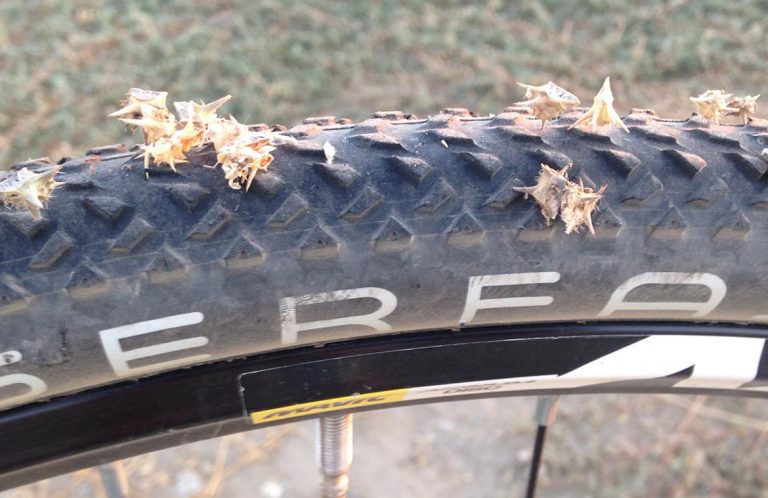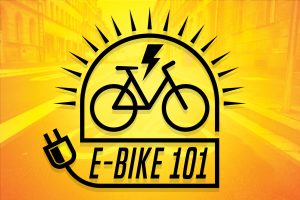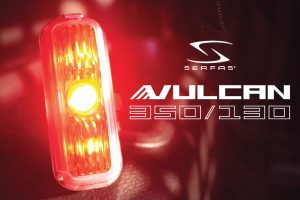The Right Lights For The Job: How-To Choose
In the world of cycling, and many outdoor recreational activities in general, most people will undoubtedly agree that having some kind of light for visibility and safety is better than not having any light with you at all. Not too surprising. There still lies a core question for many, and that is what makes a particular light better than another?
For this article we will focus on bike lights for obvious reasons, although some if not all of the same principles discussed may have useful application to other activities as well.
CASE STUDY: MTB LIGHTS
First off, what is a light? At its core a light is simply a tool used to see in dark places. Not a trick question.
Now, take that same basic light and attach an activity to it, like mountain biking. Suddenly that core idea of a light is tasked with functioning in an environment and for a user that requires specific characteristics to optimize its performance in this setting. I would bet the light you’ve been imagining so far has now changed. Rightly so, you wouldn’t bomb a dark forest trail at 9:30pm with one hand on the bars and the other holding an oil lantern out in front of you like Paul Revere riding horseback while shouting about the British, right? Or maybe you would if you’re a very interesting kind of person. Either way this is a prime example, albeit an exaggerated example, of what not using the right kind of light for a specific purpose can look like.
So what does the right light look like for someone who wants to bomb dark forest trails after dark? To clarify, by right light our concern isn’t focused on aesthetic, the design is of course an important factor but we’re focusing on the basic functional characteristics. So what functional characteristics of a light are important to a mountain biker, what kind of performance do we need from this light?
Performance Factors To Consider For A MTB Light
- Brightness / High Lumens
- Long Distance Visibility
- Light Modes
- Battery Life
- Rugged/Durable and Water/Dust Resistant
- Intuitive and Ease-of-Use
- Mounting Versatility
Brightness / High Lumens
A successful MTB light, specifically headlights, requires a far-reaching bright spot type beam that can light up the trail far enough ahead so to provide the rider adequate time to identify and react to fast approaching obstacles like sharp corners, drop offs, tree roots, mud puddles, wildlife, other MTBers, etc. As far as lumen output goes you will likely want a light capable of at least 500 lumens, although higher output figures will buy the rider even more time to react to the trail and obstacles ahead. Additionally, there is such a thing as too bright, some people may have preference for lights that are as bright as possible, however, lights pumping out over 3000 lumens can actually begin to wash out environmental details and make depth perception more difficult to decipher. Reduced output light modes, discussed further below, can combat this by allowing maximum brightness to be reserved for when it is only absolutely necessary.
Color of light output, referred to as color temperature or Kelvin, is also a significant factor that largely affects depth perception and clarity of detail. Cool white, or white with a more blueish color on the Kelvin spectrum (~5500K and up) produces a visibly brighter light but can increase glare and reflectivity within an environment while warmer toned white light (~4300K and below) produces a much more visibly yellowish color that can improve environmental clarity even while appearing less visibly bright. Choice of one particular color temperature over another can be a highly individualized preference, so headlights with LEDs producing a healthy mix of color light somewhere between the two ranges can result in a well-balanced light with some capability of both.
Long Distance Visibility
While brightness and lumens are important performance factors in being able to see the trail ahead, it’s actually the type of lens that controls how useful all that great light and brightness is when directed out of the headlight and into the environment. There are different types of lens shapes that can make a light source behave very differently, the most common recognizable example of this would be car headlights versus car fog lights — vehicle headlight beams are engineered to produce a long controlled throw of light to illuminate far out into the distance without blinding oncoming traffic while fog lights are designed to produce a shorter wide flood of light to illuminate the more immediate areas in front and to the sides of the vehicle. For a MTB headlight a spot type lens is typically what you want because it confines output to a tight narrow beam shape, which is what you want when trying to throw light as far ahead of you as possible.
Light Modes
While it’s great to have a really bright headlight capable of putting out high lumens it’s rarely necessary to be blasting full brightness all the time. Having different lighting modes to choose from adds versatility and improves battery life too since driving LEDs at full brightness drains batteries faster than at reduced power levels. In addition to high/medium/low light modes, special flash patterns are useful for added visibility during times like riding to the trail head or taking your mtb out for a quick spin around the block.
Battery Life
Stuffing a headlight with as many batteries as possible might make for some impressive runtime figures… but then you’re also left with a light about the size of a house brick and probably about as heavy as one too, not to mention batteries are expensive and any excess adds unnecessary cost to a product — we like to avoid these kinds of things. Well thought out headlights strike a healthy balance between physical form, performance, and battery life while remaining affordable. How long are your rides? It makes the most sense to ride with a light not only bright enough for your purposes but also able to provide runtimes lasting long enough to cover your usual trail outing, give or take extra time to plug a flat. If your typical ride only lasts 1 hour then maybe you don’t need to overspend on a light capable of running 3 1/2 hours on High.
Additional considerations include running a headlight capable of on-the-fly battery swaps, which typically means a tool-less accessible battery compartment that lets you pop out a spent battery and pop in a fresh one in a matter of a few seconds. This option is especially handy for when traveling and or riding new-to-you trails where you may be unsure of how long it will take to finish a ride.
Rugged/Durable and Water/Dust Resistant
Among bike lights it’s fairly important that when the inevitable gnarly trail bits get the best of you and possibly throw you off trail you don’t suddenly find yourself lights out and stumbling through the dark. Durable build construction with tight fitting components and a certified IP (Ingress Protection) rating that proves a light’s level of water and dust resistance are preferred measures for a MTB headlight given the rough and often wet environment of which one will often be used, plus your bound to be surprised with a rain shower sometime, so having a light you can count on even in foul weather is certainly an important quality to find.
Intuitive and Ease-of-Use
No matter how bright or nice looking a light is if it’s not intuitive or user friendly to use you should really just steer clear of that product. An exception might be a light with a brief learning curve due to a unique proprietary function but other than that no light should be so difficult to use that it detracts instead of improves your overall experience on the trail.
Mounting Versatility
The ability to change up how and where you can mount a headlight can be a game changer. Handlebar systems have been an industry go-to for years, traditional bar mount systems are solid, simple, and reliable — but with an increasing number of people running designated GPS computers and bar mounted smartphones for activity tracking apps like Strava® cockpit space can become quite limited. With that said, a light with GoPro® adapter mount capability can be just what you need to maximize real estate on your handlebars, the Serfas® PH-3 Accessory Holder for example (viewable here), streamlines central mounting for Garmin® computers while providing a convenient mount location to hang a light directly beneath with use of a GoPro mount adapter.
Helmet mounting is another great option and provides a number of benefits unique to its own. Lights mounted on the helmet can theoretically throw light farther down trail given the higher vantage point. Another key benefit is the light follows the direction of which you are looking with your head, so when you’re coming up on a sharp corner and look ahead to the exit you’ll already be shining light exactly where you need to compared with a normal bar mounted light which is restrained to the direction the bike and bars are pointing.
CASE STUDY: CHOOSING LIGHTS BASED ON ENVIRONMENT OF USE

URBAN/CITY
Common Characteristics:
– Frequent Dense Motor Vehicle Traffic, Frequent Pedestrian Foot Traffic
– Ambient Area Lighting, Backlit Signage, Reflective Surfaces, Motor Vehicle Lighting Spillover
– Blind Spots, Reduced Line of Sight, Narrow/Confined Spaces, Man Made Obstacles
– High/Medium Acoustical Ambience
Suggested Lighting Solutions:
In an urban/city environment outward visibility and being able to see ahead isn’t necessarily a problem as there can be plentiful ambient street and area lighting as well as spillover from vehicle headlights, the real challenge is actually increasing your own visibility so you don’t just blend in with the existing backdrop of lights and visual noise and become invisible to motorists and pedestrians.
To combat this it’s imperative that a bright headlight/tail light combo with flash modes be used, or better yet, run two headlights — one for steady straight-ahead obstacle illumination when it’s dark and the second operating as a constant high output flash for daytime/nighttime riding. Some headlights are even designed with additional side profile amber LED illumination, such as our TSL Road series headlights — this side lighting increases your light signature even further by expanding on the angle you become visible. For even more side visibility consider running a pair of LED Spoke Lights, the blurred lighting motion created while riding not only looks cool and stands out but is sure to draw lots of attention which increases safety.
A bright tail light should be used at all times, even during the day. Any tail light could be said to be better than no tail light, but if you’re making the effort why not use a light made to maximize rearward visibility such as the Serfas® Vulcan series — designed with a unique protruding finned lens and translucent bezel which creates an even larger than usual 270-degree field of visibility in addition to exceptional rearward brightness and long distance visibility from behind.

SUBURBS
Common Characteristics:
– Frequent Motor Vehicle Traffic, Frequent Pedestrian Foot Traffic, Children/Parents On Bikes
– Children At Play, Domesticated Animals
– Ambient Area Lighting, Reflective Surfaces
– Blind Spots, Reduced Line of Sight, Man Made Obstacles
– Medium/Low Acoustical Ambience
Suggested Lighting Solutions:
Suburban neighborhoods, although a relatively safe environment, can often still present a number of hazards. People have the tendency to relax more and let their guard down around their homes and in doing so accidents can still occur when least expected. Consider the potential for every driveway to become a hazard if the person backing out their car isn’t paying attention, or the blind spots created by street parked vehicles, yard vegetation, utility boxes, or actual houses themselves, also children or family pets darting out into the street unexpectedly while chasing a ball or going after a runaway skateboard. For these reasons it’s important to ride while maintaining high visibility with a proper headlight to reduce the risk of accidents, not only involving yourself but with others as well.
These kinds of neighborhoods commonly have streetlights that illuminate sidewalks and street sides during low light hours thus reducing the need to ride with an ultra bright headlight, it would be overkill to ride with a multi-thousand lumen light here, that is unless you use one you already have for MTB trails. Regardless, it’s unlikely you’d be running that light at max output to ride through a neighborhood.
For this type of environment a single headlight with flash capabilities would be appropriate, the Serfas TSL Road series headlight is a prime well designed visibility-minded option as it incorporates amber LED side markers in addition to 500/1000 lumen options for forward illumination. Our SL-80 and SL-200 headlights are also great effective economical options for rides around the neighborhood as they have left and right lens shroud openings for increased side visibility and are both powered by common AA batteries that provide 80 or 200 lumens of solid output and flash modes for daytime riding. For neighborhoods with little to no street lighting our USL-1200/1600 E-Lume series lights pump out high lumens in a compact self-contained package and have daytime flash modes and side running lights for improved side visibility.
For Children’s tricycles or scooters a great option is to equip them with our very compact yet super bright Thunderbolt/Thunderbolt 2.0 series lights, both of which are easily installed/removed and are conveniently USB rechargeable.
A tail light should also be used even during the day, especially with the commonplace of hybrid electric vehicles that tend to engage a very quiet electric-only mode while traveling at low speeds, it’s probably happened to most of us by now to have been surprised by the presence of a quiet hybrid car suddenly right behind you, having that bright tail light can help provide some reassurance that the driver is going to see you even if you don’t hear them coming. The Serfas® Vulcan series — designed with a unique protruding finned lens and translucent bezel creates an even larger than usual 270-degree field of visibility in addition to exceptional rearward brightness and long distance visibility from behind, perfect for riding through a neighborhood to get the attention of someone about to reverse out of their driveway. Further safety conscious options include our helmet mounted series of lights, like the HLMT-1 Titan and HLMT-2 Phoenix, which add significant visibility range due to being located up higher on the back of the head as well as being directly reactive to the motions of the rider’s head.

RURAL
Common Characteristics:
– Sparse Motor Vehicle Traffic, Slow Moving Vehicles (SMV), Infrequent Pedestrian Traffic
– Sparse Children At Play, Domesticated Animals, Wild Animals
– Spare Ambient Area Lighting
– Blind Spots, Reduced Line of Sight, Man Made Obstacles, Agricultural Road Debris
– Low Acoustical Ambience
Suggested Lighting Solutions:
Rural areas are by definition very spread out and with low population density and are often, but not always, agricultural areas. At night in rural areas one can expect long stretches of darkness as road lighting will be sparse, if any, and limited outside of town. A bright headlight with far reaching optics, medium to high lumen output, and long battery life will be your best friend for this kind of area where you may need to cover greater distances. The good news is with less ambient lighting to compete with you can get away with a lower lumen headlight, although too low might make for a spooky ride when it’s super dark.
Our E-Lume series of headlights are compact, self-contained, USB rechargeable and available in a wide range of outputs with the lowest range model producing 250 Lumen and going all the way up to 1600 Lumen in the top model. For dark rural roads a solid recommendation would be to start with at least the E-Lume 650, which even on Medium brightness produces a comfortable 200 Lumen and will do so for 5 hours, which depending on how far you have to travel should leave a comfortable margin of battery that should you need to bump up to High (400 Lumen) or Overdrive (650 Lumen) for some distance of road or trail that you will have enough battery life remaining for the rest of the ride.
If a self-contained light doesn’t appeal to you then perhaps a headlight capable of on-the-fly battery swaps is your preference. We recommend the Serfas True Series Road and MTB headlights, both of which are powered by a single Li-Ion rechargeable battery and capable of quick tool-less battery swaps, perfect if your preference is to carry a fully charged backup battery that you can easily pop in and go. If regular AA batteries are more your style the Starter SL-200 can be a great economical option. Powered by two AA batteries the SL-200 can output 200 Lumens for up to 5 1/2 hours on High.
If budget is of little concern and your primary goal is maximum brightness, beam distance, AND capability of on-the-fly battery swaps is your preference then the TSL-2500 True headlight is your light. The True 2500 isn’t just bright, it’s more than twice as bright as the average vehicle’s high beams are in the United States. As the designation indicates, the TSL-2500 produces a whopping 2500 Lumen in Overdrive and will run for 1 hour and 45 minutes (or 2 hours 45 minutes in its next most powerful mode, High – 1600 Lumen). The TSL-2500 is powered by a convenient removable frame mounted 6400mAh battery pack which means if you purchase a spare and keep it charged and mounted along with the primary battery on your frame you’ll then have convenient backup power to plug right into by simply moving the plug connector to the fresh battery. An added bonus is each battery pack has an integrated USB charging port which can be used to charge a cell phone or other small electronic devices while out on the go.
To compliment your headlight, a great choice of tail light with performance characteristics well suited for a rural setting would be the Serfas TBT-50R Thunderbolt 2.0 or TSV-130 Vulcan 130, both lights are USB rechargeable and capable of long run times when set to Low Flash or Daytime Flash — the TBT-50R is capable of 19 hours on Daytime Flash at 50 Lumen and the Vulcan 130 matches that same 19 hour Daytime Flash at more than double the output with 130 Lumen and pushes battery life even further on Low Flash to 22 hours. The “big brother” to the Vulcan 130, the Vulcan 350, is also a solid choice. At seven times the output of the TBT-50R, the Vulcan 350 produces a massive 350 Lumen Daytime Flash while maintaining the same 19 hours of run time. Apart from light output the biggest advantage of these lights is the unique fin lens design and translucent lens shroud of the Vulcan series which broadcasts light up to an incredible 270 degree field of view, combined with 350 Lumen of output there’s little chance of not remaining safe and visible while practically everything around you lights up red with each 350 Lumen flash of the Vulcan.

DESERT
Common Characteristics:
– Frequent To Infrequent Motor Vehicle Traffic, Off Highway Vehicle (OHV) Traffic, Recreational Pedestrian Traffic
– Wildlife, Recreational Domesticated Animals
– Limited Or No Area Lighting
– Acute Elevation Changes, Hazardous Terrain And Vegetation, Seasonal Monsoon/Flash Flooding, Isolated Storm Cells, Extreme Temperatures
– Long Range Visibility Mixed With Reduced Sight Lines Due To Change In Elevation/Terrain, Wide Open And Confined Spaces
– Low Acoustical Ambience
Suggested Lighting Solutions:
The desert landscape offers lots of unique riding opportunities with amazing scenic vistas, brilliant sunrises and sunsets, interesting vegetation, wildlife, and geographic features to see and explore — although, beautiful as the desert is it doesn’t take much for a situation to take a turn for the worst if you’re unprepared. When it comes to desert riding, riding with the correct lighting is for sure a key part of being prepared and staying safe.
When desert riding, a single bar mounted headlight might not throw light exactly where you need it, especially when hitting a section of twisties and the direction of the bars don’t always always align with the trail, when this happens your light source is shining elsewhere. This is why we strongly recommend running a dual light setup — one bar mounted light and a helmet mounted light — this way you have plenty output for fast straight trail sections and then active precision lighting mounted up on the helmet to point whatever direction your head is looking. Solid choices for compact all-in-one bar mounted solutions include the TSL-1100M MTB headlight and the E-Lume series models in the 900 to 1600 Lumen output range, these offer a great balance of performance and battery life plus they all have Daytime Flash modes which is perfect for staying visible to others even when it’s still light out. If maximum lumen output and a broad beam is what you want then the TSL-2500 headlight with external battery pack is a great choice, with 2500 Lumen output at your disposal practically no trail will be too dark to ride. For helmet lights great options again include the TSL-1100M MTB headlight and E-Lume series models, these are all bright and lightweight options and don’t require an additional battery back to mount to the rear of the helmet. When trail riding in a group a helmet or seat post mounted tail light to function as a chase light can be useful so your buddies can keep an eye out for you when things get dusty, for this the Vulcan series and the Thunderbolt 2.0 are good choices as they’re small but mighty and provide enough brightness to cut through kicked up dust clouds.
IN CONCLUSION…
If you’ve made it this far then by now you probably have a better understanding and appreciation for well designed lighting and the potential effectiveness those lights can have within an environment based on unique characteristics and challenges pertaining to those spaces. Ultimately there is no right or wrong when it comes to lights, the main objective is to stay visible and see where you want to go — We all have personal preferences and like and dislike certain things so there really is no one end-all-be-all solution, but hopefully this information will provide some benefit and future guidance when it comes time to choosing lights in the future.

